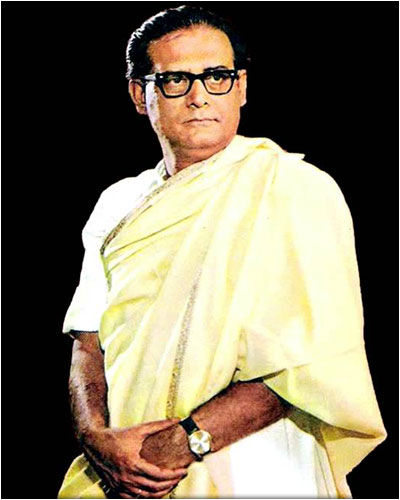Kangana Ranaut Revisits Controversial Remarks on Urmila Matondkar, Stands Firm in Defense
- 13 Apr - 19 Apr, 2024
Name: Hemanta Mukherjee
DOB: 16 June, 1920
Star sign: Gemini
Birthplace: Varanasi, India
Occupation: Music director, film producer and singer

• Hemanta Mukherjee (often credited as Hemant Kumar outside Bengal) sang in Bengali, Hindi, Marathi, Gujarati, Assamese, Oriya, Konkani, Bhojpuri and other Indian languages. He is also one of the greatest artists of Rabindra Sangeet.
• He won two National awards, three Filmfare awards among many other awards and honours and is often credited as one of the greatest Indian singers of all time for his unparalleled manly voice.
• In 1984, Hemanta was felicitated by different organisations, most notably by the GCI, for completing 50 years in music.
• The GCI releases at least one album by Hemanta every year, repackaging his older songs.
• From the paternal side, Hemanta’s family originated from Baharu of Jaynagar. They migrated to Kolkata in the early 1900s where he grew up and attended school.
• There he met his longtime friend Subhas Mukhopadhyay who later became a Bengali poet. During this time, he also developed a friendship with the noted writer Santosh Kumar Ghosh. At that time, Hemanta wrote short stories, Santosh wrote poems and Subhash sang songs.
• After passing the 12th grade, Hemanta joined Bengal Technical Institute at Jadavpur to pursue Engineering. However, he quit academics to pursue a career in music, despite objection from his father. He briefly tried literature and published a short story in the prestigious Bengali magazine called Desh, but by the late-1930s he was committed entirely to music.
• Under the influence of Subhas, Hemanta recorded his first song for All India Radio in 1935. In his early life, Hemanta used to follow the famous Bengali singer Pankaj Mullick. For this he was nicknamed as "Chhoto Pankaj".
• In 1937, Hemanta cut his first gramophone disc (non-film songs) under the Columbia label. Thereafter, every year he continued to record non-film discs for the Gramophone Company of India (GCI) till 1984.
• During the 1940s, he started singing and composing songs for Bengali movies.
• Hemanta gained popularity in Mumbai as a playback singer in the 1950s and 60s and also carved a niche as a composer with films like Nagin (1954).
• In the late 1950s, Hemanta ventured into movie production under his own banner Hemanta-Bela productions, later changed to Geetanjali productions. The first movie under this banner was a Bengali film about the travails of a Chinese street hawker in Calcutta in the backdrop of India's freedom struggle and went on to win the President's Gold Medal.
• In 1971, Hemanta debuted as a film director in a Bengali movie. In the same year, he went to Hollywood to collaborate with film director Conrad Rooks on the music of Siddhartha and even sang for it, thus becoming the first Indian singer to playback in Hollywood. The US government honoured Hemanta by conferring him with the citizenship of Baltimore, Maryland.
COMMENTS